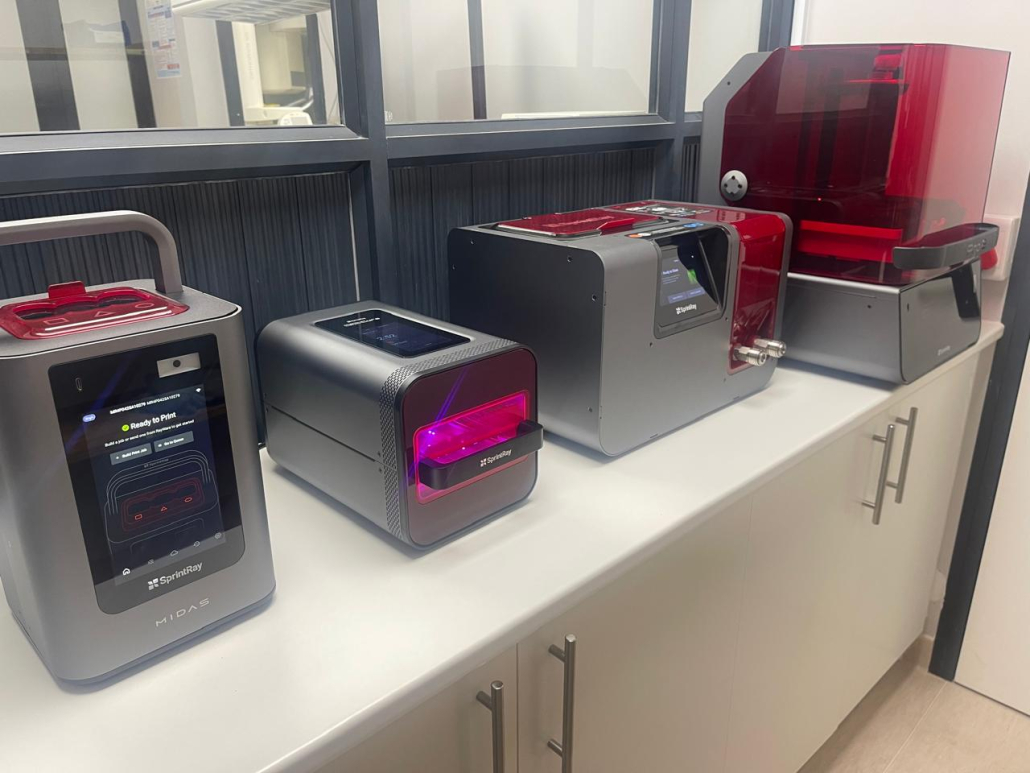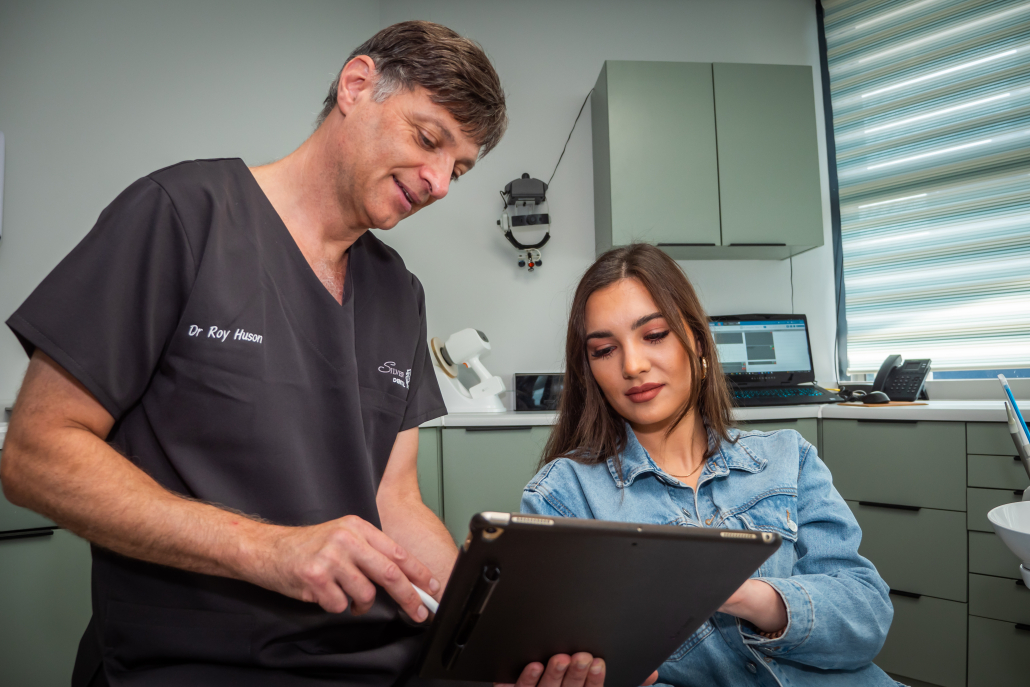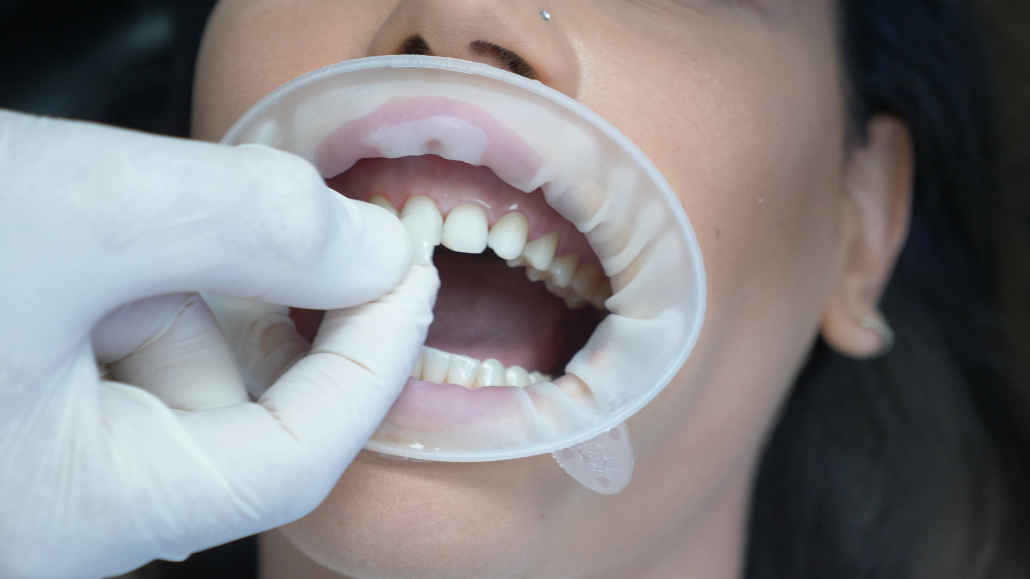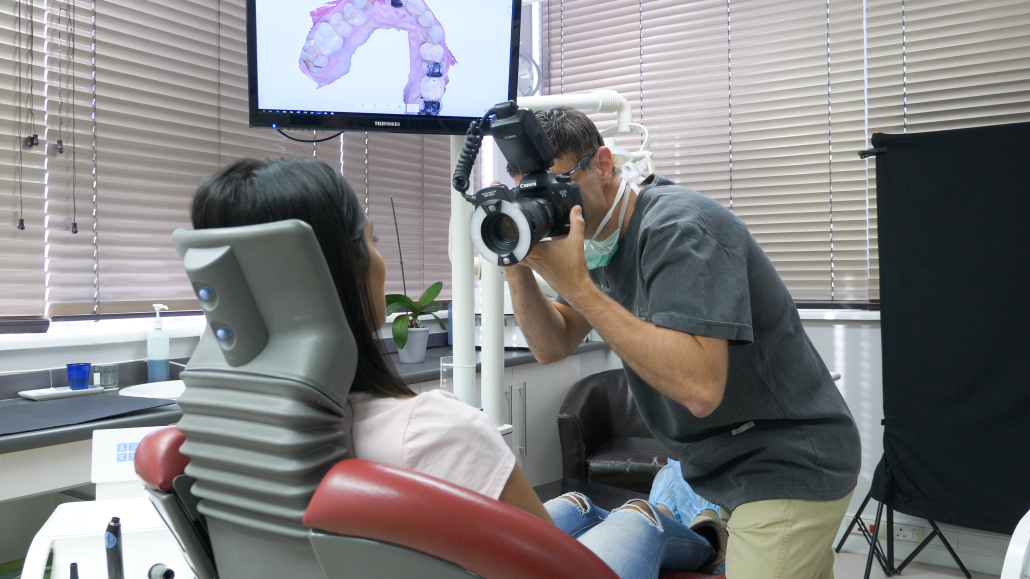Understanding how clear aligners work for adult patients is crucial for making an informed decision about orthodontic treatment. At Silver Oaks Dental Clinic, we believe that educated patients achieve the best outcomes, which is why we’re committed to explaining the science behind clear aligner technology and how it’s specifically adapted for adult needs.
Clear aligners represent one of the most significant advances in orthodontic care, combining cutting-edge materials science with sophisticated treatment planning software to deliver predictable, comfortable results. Unlike traditional braces that rely on brackets and wires, clear aligner treatment uses a series of custom-made, transparent trays that gradually guide teeth into their optimal positions.
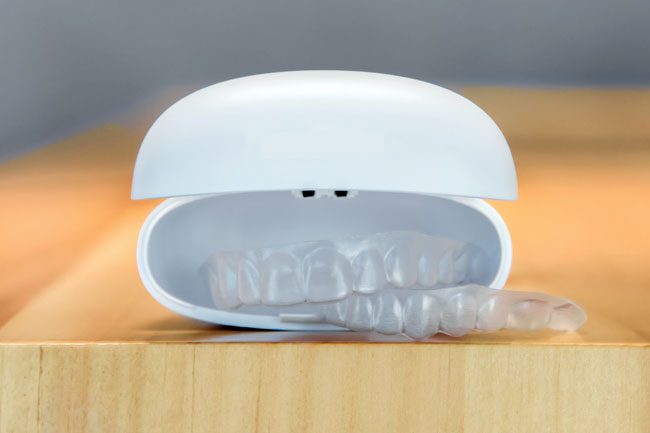
Starting your clear aligner treatment as an adult.
The Science Behind Clear Aligner Therapy for Adults
Understanding the Biological Foundation
The effectiveness of clear aligners relies on the same fundamental biological principles that govern all orthodontic movement, regardless of age. We help our patients understand that teeth are not rigidly fixed in the jawbone, but rather are held in place by a complex system of fibres and supported by bone that can adapt and remodel throughout life.
When clear aligners apply gentle, controlled pressure to teeth, they trigger a remarkable biological response called bone remodelling. This process involves the breakdown of bone tissue on one side of the tooth (where pressure is applied) and the formation of new bone tissue on the opposite side (where the tooth is moving towards). This cellular activity is what allows teeth to move gradually into new positions during clear aligner treatment.
The Journal of International Orthodontic Orthognathic Surgery (2022) confirms that whilst this bone remodelling process may occur at a slightly slower rate in adults compared to adolescents, it remains highly effective throughout life.
What’s particularly fascinating about clear aligners is how the technology has been refined to work optimally with adult physiology. The forces applied by clear aligners are carefully calibrated to stimulate bone remodelling without causing damage or excessive discomfort, making the treatment both effective and comfortable for adult patients.
Advanced Materials and Manufacturing
Modern clear aligners are manufactured using sophisticated thermoplastic materials that represent the cutting edge of dental technology. According to the comprehensive review published in Frontiers in Materials (2022), most clear aligners are made from thermoplastic polyurethane materials, specifically chosen for their unique combination of properties.
At Silver Oaks Dental Clinic, we work with clear aligner systems that utilise materials engineered for optimal performance in the mouth. These materials must be transparent enough to remain virtually invisible, flexible enough to be comfortable during extended wear, yet strong enough to apply the precise forces needed for tooth movement. The biocompatibility of these materials is crucial, as adults typically wear aligners for 20-22 hours per day over many months.
The manufacturing process itself is a marvel of modern technology. Each set of clear aligners for adults is custom-manufactured using 3D printing technology based on precise digital models of the patient’s teeth. This level of customisation ensures that every aligner fits perfectly and applies forces exactly where needed to achieve the planned tooth movements.
The precision of modern manufacturing means that clear aligners for adults can achieve remarkably predictable results. We use advanced digital treatment planning that allows us to show patients their expected results before treatment even begins, providing confidence and peace of mind about their investment.
Digital Treatment Planning Revolution
Perhaps the most significant advancement in clear aligner technology has been the development of sophisticated digital treatment planning systems where we use cutting-edge software that creates detailed 3D models of patients’ teeth and simulates the entire treatment process from start to finish.
This digital approach begins with precise scanning of the patient’s teeth, either through digital impressions or traditional moulds that are digitised. The resulting 3D model captures every detail of the patient’s dental anatomy, providing the foundation for creating a customised treatment plan.
The software then calculates the optimal path for moving each tooth from its current position to the desired final position. This process takes into account the unique characteristics of adult dentition, including any previous dental work, bone density considerations, and the patient’s specific treatment goals. The result is a series of incremental movements, each represented by a different set of aligners.
What makes this particularly valuable is the ability to visualise the entire treatment process before it begins. Patients can see exactly how their smile will transform over the course of treatment, helping them understand the value of their investment and maintain motivation throughout the process.
How Clear Aligners Address Adult-Specific Orthodontic Challenges
Accommodating Previous Dental Work
One of the unique challenges in providing clear aligners for adults is accommodating previous dental work such as crowns, bridges, fillings, and implants. Our experienced team is skilled at developing treatment plans that work harmoniously with existing dental restorations.
Clear aligner treatment can be successfully completed even when patients have significant previous dental work, though it may require modified approaches. For example, teeth with crowns can still be moved orthodontically, but the treatment planning must account for the different properties of the crown material compared to natural tooth enamel.
Dental implants present a particular consideration, as they cannot be moved orthodontically. However, clear aligners for adults can be designed to move the surrounding natural teeth into better positions relative to the implants, often improving both function and aesthetics.
The key to successful clear aligner treatment with previous dental work is thorough planning and realistic expectations. During the consultation process, we carefully evaluate all existing dental work and explain how it will influence the treatment plan and expected outcomes.
Managing Periodontal Health During Treatment
Adult patients often have concerns about gum health during orthodontic treatment, and rightfully so. Periodontal health becomes increasingly important with age, and any orthodontic treatment must be carefully managed to protect and preserve gum health which is why we place particular emphasis on maintaining excellent periodontal health throughout clear aligner treatment.
One of the significant advantages of clear aligners is their removability, which allows for superior oral hygiene compared to traditional braces. Patients can remove their aligners for thorough brushing and flossing, making it easier to maintain the high level of oral hygiene that adult patients require.
The MDPI study (2023) highlights how proper tooth alignment achieved through clear aligner treatment can actually improve gingival health by eliminating areas where plaque and bacteria typically accumulate. This is particularly beneficial for adult patients who may already be at increased risk for periodontal disease.
Throughout treatment at Silver Oaks, we monitor periodontal health closely and provide guidance on optimal oral hygiene techniques for patients wearing clear aligners. This proactive approach helps ensure that patients not only achieve straighter teeth but also maintain or even improve their gum health during treatment.
Addressing Bone Density Considerations
As we age, changes in bone density can affect how teeth respond to orthodontic forces. Our treatment planning takes these physiological changes into account, ensuring that treatment remains safe and effective regardless of the patient’s age.
While bone density changes can affect the rate of tooth movement, they don’t prevent successful treatment. Instead, our experienced team adjusts treatment protocols to work optimally with each patient’s individual physiology. This might involve slightly longer wear times for each set of aligners or modifications to the force levels applied.
The gentle, controlled forces applied by clear aligners are particularly well-suited to adult patients, as they stimulate bone remodelling without placing excessive stress on the supporting structures. This makes clear aligner treatment not only effective but also comfortable for adult patients.
Regular monitoring throughout treatment allows us to assess how each patient is responding to treatment and make any necessary adjustments to ensure optimal outcomes. This personalised approach is one of the key factors that makes clear aligner treatment so successful at Silver Oaks.
Advantages of Clear Aligners Specifically for Adult Patients
Professional and Social Discretion
Perhaps the most compelling advantage of clear aligners is their virtually invisible appearance. We understand that adult patients have professional and social obligations that make discretion a priority. Clear aligners address this concern beautifully, allowing patients to undergo orthodontic treatment without drawing unwanted attention.
The transparent nature of clear aligners means that most people won’t even notice that you’re wearing them. This is particularly important for professionals who attend client meetings, give presentations, or work in customer-facing roles. The confidence that comes from knowing your orthodontic treatment is virtually invisible allows you to focus on your professional responsibilities without self-consciousness.
Social situations also become more comfortable with clear aligners for adults. Whether you’re attending social gatherings, dating, or participating in family events, the discrete nature of clear aligners means you can smile, speak, and laugh naturally without feeling self-conscious about your orthodontic treatment.
Many of our patients report that colleagues and friends don’t even realise they’re undergoing orthodontic treatment until they mention it. This level of discretion is simply not possible with traditional metal braces, making clear aligners the preferred choice for image-conscious adults.
Lifestyle Flexibility and Convenience
Clear aligners also offer unprecedented flexibility compared to traditional orthodontic treatments. The removability of clear aligners means that patients can adapt their treatment to their lifestyle rather than dramatically changing their routine to accommodate orthodontic appliances.
We emphasise that while clear aligners should be worn 20-22 hours per day for optimal results, they can be removed for eating, drinking, and special occasions. This flexibility is particularly valuable for adults who attend business dinners, social events, or have professional obligations that might be complicated by fixed orthodontic appliances.
The ability to remove clear aligners for eating means there are no dietary restrictions during treatment. Adults can continue to enjoy all their favourite foods, from crunchy vegetables to sticky treats, without worrying about damaging orthodontic appliances or getting food trapped in braces.
Special occasions also become more manageable with clear aligners. While we recommend keeping aligner removal to a minimum, patients can temporarily remove their aligners for important events like weddings, job interviews, or professional presentations if absolutely necessary.
Enhanced Oral Hygiene Capabilities
Maintaining excellent oral hygiene becomes increasingly important with age, and clear aligners actually make it easier to maintain optimal dental health during orthodontic treatment.
The removability of clear aligners allows for thorough brushing and flossing using normal techniques. This is a significant advantage over traditional braces, which can make cleaning difficult and may increase the risk of decay and gum problems. Adult patients, who often have more complex dental histories, particularly benefit from this improved cleanability.
Many patients find that the routine of removing aligners for cleaning encourages more frequent and thorough oral hygiene. The need to clean both teeth and aligners often results in patients paying more attention to their oral health than they did before treatment.
The improved alignment achieved through clear aligner treatment also makes long-term oral hygiene easier. Straighter teeth are naturally easier to clean, reducing the risk of future dental problems and making it easier to maintain the investment in orthodontic treatment.
Treatment Duration and Expectations for Adults
Realistic Timelines for Adult Clear Aligner Treatment
One of the most common questions we receive concerns treatment duration. While every case is unique, understanding typical timelines helps patients set realistic expectations and plan for their orthodontic journey.
According to the review in Preprints.org (2025), treatment duration for clear aligners in adults typically ranges from 12 to 24 months, depending on case complexity. This timeframe is remarkably similar to treatment times for adolescents, though individual factors can influence the specific duration for each patient.
At Silver Oaks, we’ve found that simpler cases involving mild crowding or spacing often resolve in 12-18 months, while more complex cases requiring significant tooth movement may take 18-24 months or occasionally longer. The key factors that influence treatment duration include the severity of the initial malocclusion, the complexity of the movements required, and patient compliance with wearing instructions.
It’s important to understand that whilst adult bone remodelling may occur at a slightly slower rate than in adolescents, this difference is often not clinically significant. Many of our adult patients complete their treatment within the same timeframes as younger patients, particularly when they maintain excellent compliance with wearing instructions.
Factors That Influence Treatment Success
Patient compliance plays the most crucial role in determining both the success and duration of clear aligner treatment for adults. The 20-22 hours per day recommendation is essential for achieving optimal results within the predicted timeframe.
The advantage of treating adults is that they typically demonstrate excellent compliance with treatment instructions. Adult patients understand the investment they’re making and are generally highly motivated to follow recommendations. This often results in more predictable treatment outcomes compared to adolescent patients.
Individual biological response also influences treatment progression. Some patients respond more quickly to orthodontic forces, while others may require additional time for optimal tooth movement. Our experienced team monitors each patient’s progress closely and adjusts treatment plans as needed to ensure the best possible outcomes.
The complexity of the initial orthodontic problem naturally affects treatment duration. Simple spacing or crowding issues often resolve relatively quickly, while cases involving significant bite corrections or rotational movements may require extended treatment times. During the initial consultation, we provide realistic estimates based on the specific characteristics of each case.
Managing Expectations Throughout Treatment
We believe that well-informed patients have the most positive treatment experiences. We take time to explain not only the expected final outcome but also what patients can expect during the various phases of clear aligner treatment.
The initial adjustment period typically lasts a few days to a week as patients become accustomed to wearing clear aligners. Some mild discomfort or pressure is normal during this period and when transitioning to new aligners, but this usually subsides quickly and can be managed with over-the-counter pain relievers if needed.
Progress during clear aligner treatment for adults is typically gradual and steady. While dramatic changes aren’t usually visible week-to-week, patients often notice significant improvements after 2-3 months of treatment. We schedule regular check-ups to monitor progress and provide encouragement throughout the treatment journey.
It’s important for adult patients to understand that orthodontic treatment is a process that requires patience and commitment. However, the investment of time yields long-lasting benefits that extend far beyond the treatment period, making it a worthwhile commitment for patients of any age.
Common Concerns About Clear Aligners for Adults
Speech and Comfort Considerations
Many prospective patients worry about how clear aligners will affect their speech, particularly given the professional communication requirements that many adults face. These concerns are thoroughly addressed during consultation and we provide guidance to help patients adapt quickly to their new aligners.
Most patients experience only minor speech changes when they first begin wearing clear aligners, typically a slight lisp that resolves within a few days as the tongue adapts to the presence of the aligners. The thin profile of modern clear aligners minimises speech interference, and most patients find that colleagues and friends don’t notice any changes in their speech.
For professionals who rely heavily on verbal communication, we recommend starting clear aligner treatment at a time when they can allow for a brief adjustment period. However, most patients find that any initial speech changes are so minimal that they don’t interfere with professional activities.
Comfort is another common concern, and we’re pleased to report that clear aligners for adults are generally very comfortable to wear. The smooth plastic material doesn’t irritate the cheeks and lips like traditional metal braces can, and the custom fit ensures that aligners feel secure and comfortable during extended wear.
Effectiveness Compared to Traditional Braces
Adult patients often wonder whether clear aligners are as effective as traditional braces for their specific orthodontic needs. The truth is that clear aligner technology has advanced dramatically and can now address most orthodontic issues that adults commonly face.
The MDPI study (2023) demonstrates that clear aligners are particularly effective for mild to moderate crowding, spacing issues, and many bite problems. In fact, we’ve successfully treated a wide range of orthodontic conditions using clear aligners, often achieving results that exceed patients’ expectations.
Certain complex cases may still require traditional braces or hybrid approaches, but the vast majority of adult orthodontic needs can be addressed effectively with clear aligners. During the consultation process, we thoroughly evaluate each case and recommend the most appropriate treatment modality for optimal results.
The predictability of clear aligner treatment, enabled by advanced digital planning, often allows for more precise control over tooth movement than traditional braces. This precision is particularly valuable for adult patients who want to understand exactly what their investment will achieve.
The Science-Backed Choice for Adult Orthodontics
Understanding how clear aligners work reveals why this technology has become the preferred choice for so many adults seeking orthodontic treatment. The combination of advanced materials science, sophisticated treatment planning, and design features specifically suited to adult needs makes clear aligners an optimal solution for adult orthodontics.
If you’re ready to learn more about how clear aligners could work for you, contact Silver Oaks Dental Clinic to schedule your comprehensive consultation. Our experienced team will evaluate your individual needs and explain exactly how clear aligner technology can help you achieve your orthodontic goals.
